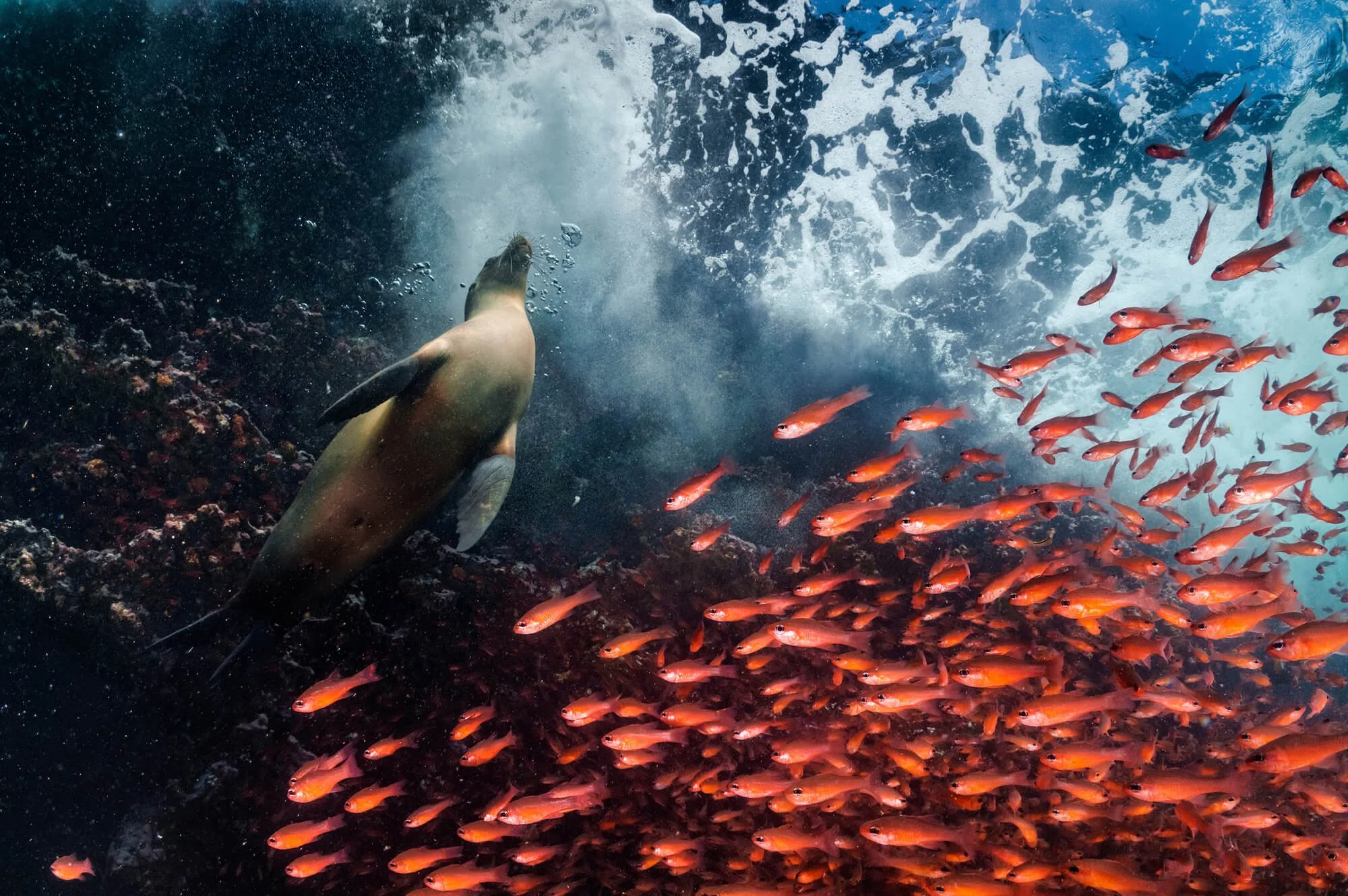Five Cosmic LInks Between the Moon and the Oceans
To celebrate the 50th anniversary of the first Moon landing, we explore five obvious and not-so-obvious connections between the oceans and our nearest celestial neighbor
Exploring the oceans and the Moon challenges us
Despite it being about a quarter of a million miles away in space, we have far more detailed maps of the Moon than we do of the seafloor. Shielded by darkness, sea water and its sheer vastness, the bottom of the ocean is, in many ways, a far more alien realm than the lunar surface. Twelve American astronauts set foot on the Moon during the Apollo Program, but only five people have ever reached the deepest part of our ocean, the Mariana Trench. Exploring both the deep oceans and the lunar surface is expensive and dangerous – NASA lost three explorers during Apollo, and the oceans have claimed many more. As humanity makes plans to return to the Moon and explores more widely underwater, parallel technologies like robotics, artificial intelligence, spacesuits and diving suits will no doubt develop in tandem.
Learn more – Spacesuits + Diving Suits
The Moon creates the ocean’s tides
The most physical connection between our planet and the Moon are its daily effects on the ocean. Along with the Sun, the Moon’s mass pulls at the water that covers 70% of our planet, tugging it across the surface and concentrating it to form high tides. Because of local geography and the ever-changing position of the Sun and the Moon, tides can vary from next to nothing to the massive, 53.5-feet difference between low tide and high tide in Canada’s Bay of Fundy.
Learn more – NOAA
Sea turtles, reef fish and corals follow the Moon
Over millions of years, creatures in the ocean have evolved to adapt to the changing tidal habitats caused by the Moon’s gravity – but even just moonlight has a powerful influence on marine life. On coral reefs, for instance, angelfish and butterflyfish have been observed feeding all night by the light of the full Moon. Corals themselves use the lunar cycle to time their spawning, ensuring that all eggs are released at the same time and carried further by more powerful tides. Baby sea turtles, emerging from their sandy nests, look for the Moon’s sparkling light glinting off the waves to guide them down the beach to the ocean. It’s one of the reasons beach resorts, with their artificial lights, can be so harmful – disorienting the hatchling turtles and leading them in the wrong direction.
Learn more – Sea Turtle Conservancy
There are “oceans, seas and storms” on the Moon
Back in the 1650s, when humanity first started observing the Moon in detail through early telescopes, astronomers like Giovanni Battista Riccioli imagined the dark patches as vast seas and oceans on the lunar surface. It being a more romantic era, the lunar ‘maria’ – which we now know were created by lava flows – were named the Sea of Islands, the Foaming Sea, the Sea of Waves, the Sea of Nectar, the Ocean of Storms and the Sea of Tranquility – where Neil Armstrong and Buzz Aldrin landed 50 years ago and set up ‘Tranquility Base’.
Learn more – BBC
‘Earthshine’
Have you ever looked up at the crescent Moon and almost imagined you could see the whole thing? That’s not your eyes playing tricks on you. It’s a phenomenon called ‘Earthshine’ – or ‘Planetshine’ when it happens elsewhere in the Solar System. On our Moon, the faintly illuminated dark part you sometimes see is caused by the Sun glinting off the world’s oceans, sea ice and clouds like a giant mirror, and dimly lighting the part of the Moon that would otherwise be invisible – like in the photo above. It’s a beautiful reminder we live on a planet of water, suspended among the stars.
Learn more – NASA

















